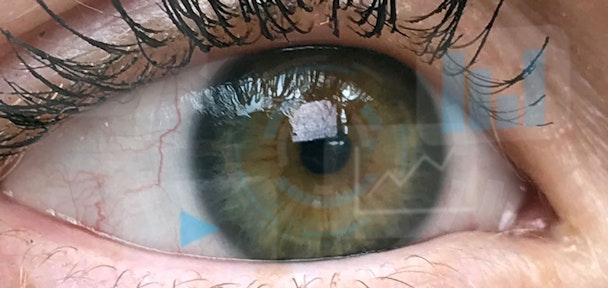The future lies in biometrics
In the first chapter of this two part blog Alice Learey of Hydra Creative examines the advancement of biometrics in everyday life.

The future is biometrics.
Biometrics - the identification of a person through certain unique characteristics (finger prints, iris scans, facial recognition, etc) - are increasingly shaping our relationship with digital technology. These are characteristics unique to each individual, even twins. Once restricted for use in high security military compounds, this unique data is becoming more and more commonplace in our everyday lives. Fingerprints and facial recognition are used to unlock not just phone home screens but also highly sensitive portals such as banking apps, as well as providing a whole new dimension to the entertainment and retail industries. The uniqueness of the biological features that biometric authentication uses means biometric data has become synonymous with online security.
Everyday life
Increasingly, biometrics in the form of fingerprints and facial recognition have filtered down into day to day general use replacing passwords on phones and linked applications. Fingerprints started unlocking phones and that was just the tip of the iceberg. With Apple's success with the iPhone 5s, the acceptance of biometrics by the general public has snowballed. According to research by WorldPay, 63% of consumers now look to use biometric scan payments when shopping.
The unique data that biometrics relies upon makes it a great security asset. Dubai International Airport has taken this functionality one step further in combating long security queues: they have developed a virtual aquarium tunnel that has around 80 cameras in-built to scan and identify the faces of travelers while they are in motion - effectively eliminating more laborious ways of confirming identities. And it is not just security that is making use of this functionality. Webcams can now perform facial identification for a multitude of ends, including verifying presence in online exam conditions and gauging emotion through pupil dilation. augmented reality and virtual reality use similar face mapping technology to ascertain user engagement.
New technology
The advancement in AR and VR technology has been significantly aided by biometric data to better inform upon the experience that they provide - from entertainment right through to retail capabilities. Already, MasterCard envision a collaboration between AR and biometrics as demonstrated in October's Money20/20 event.
Mastercard has launched a new shopping system, one in which the shopper browses through virtual products in a real retail environment by using AR glasses, and can make purchases using biometric verification. Meanwhile, the potential for supplying this service to the online shopper is already available. Alongside this revolutionary digitised approach to shopping is the future as seen by Business.com, looking at the collaborative opportunities between biometric data and personalising customer service; delivered by linking facial recognition software with a point of sale system. The facial identification, linked to previous transactions, would recognise sales patterns and inform the sales representative in order to deliver a highly personalised customer service. This offers us a snapshot of the future of transactions, that will no longer require a wallet or even a phone, offering a smooth transaction and seamless customer service.
Looking to the future
Currently the most widely used application of biometrics functions as a security measure. Meanwhile, entertainment and retail industries are striving to be the industry-leaders in incorporating biometrics into their business. As it continues to develop and become a normalised element of consumer life, the influence of biometrics on our future online and digital behaviours are highly likely to be redefined. The future of biometrics opens up a whole new dimension to seamless and personalised online interactions. This collaborative ideology reinforces the growing relationship that exists between technology and human interaction, viewing these as one entity with increasingly blurred boundaries between the real and digital spheres.
The second part of the series can be found here.
Alice Learey, digital marketing executive, Hydra Creative
Content by The Drum Network member:

Hydra Creative
When we put our heads together, we're Hydra
The collaborative, award winning, client driven, full service digital agency.
Whether it's a bespoke website...

